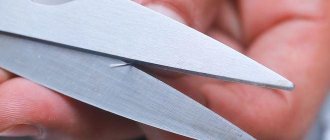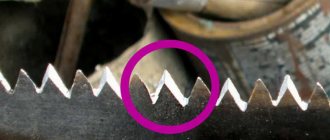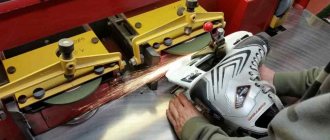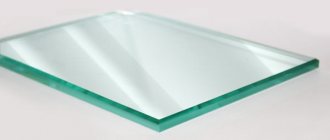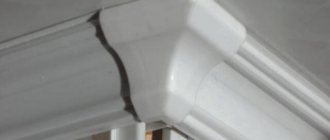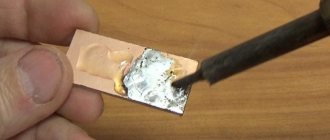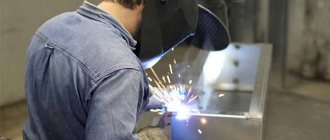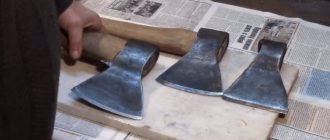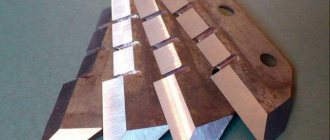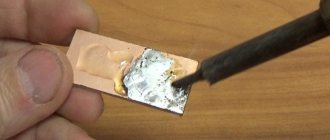One of the main rules for working with a plane, chisel or chisel is the need to work only with a well-sharpened tool. The meaning of this rule is extremely simple - when working with a sharp tool, the risk of damaging the workpiece is reduced to almost zero. That is why every master must not only be well versed in the intricacies of using the tool, but also be able to sharpen and tune it correctly. And you can do this quickly and correctly using a device for sharpening plane knives, which is easy to make yourself from a block of wood and a couple of bolts.
How to use a hand plane on wood correctly
The rules for using hand tools in general are almost the same as the operating instructions for an electric planer.
Before work, the device is carefully inspected for defects and it is made sure that the sole is not deformed, and the cutting parts are located parallel to it. The process of using a plane looks like this:
- A piece of wood is secured in a workbench clamp and a hand tool is placed on top of it.
- The device is firmly grasped by both handles and begins to move smoothly and with even pressure along the fixed board.
- The body is moved forward along with the tool, with the supporting leg placed forward.
As with an electric planer, when performing complex work, it is recommended to remove layers of wood gradually. This will prevent gross mistakes and protect against the appearance of snags, humps and depressions on the surface of the board.
A hand plane is convenient for planing small narrow boards in small quantities.
Preparatory stage
The work begins with the preparatory stage. It looks like this:
- First, download the drawings with step-by-step instructions.
- The next step is to select the required materials.
- Certain tools are also required to process the material.
There are quite a large number of different sharpeners that you can make yourself. Hand tools have become widespread because they are quite easy to use.
Basic rules of work
Proper sharpening of a plane knife primarily depends on the material you are working with. The fact is that when working with soft woods, such as linden, aspen, and pine, it is recommended to bring the sharpening angle of the wood plane to 45-50 degrees. To work with medium-hard wood species, it is recommended to sharpen the blade at a sharpening angle of 60 degrees. When working with hard wood, the cutting edge is sharpened at an angle of 75-80 degrees.
For all types of blades, the first step is dressing with a large-grain abrasive material - this is necessary in order to remove nicks
At this stage, it is important that the cutter maintains a straight edge shape; it is important here that the metal is removed evenly across the entire width of the blade. To check the correct sharpening, a template plate with a perfectly flat surface is used
The blade is placed on the surface of the plate and flaws are identified by the gap between the cutting edge and the plane. At this stage, you can use a regular sharpener with large and medium-grit abrasive wheels.
After the shape of the cutting edge has been restored, the angle between the side edges and the cutting plane is checked with a square. In addition, the cutting edge angle is checked using a template. If flaws are found, you will have to repeat the process.
Sharpening the plane on a fine-grained stone is done at low speeds using a water bath. The metal should not overheat, otherwise it will lose its properties. It will be easier to work on an electric machine if you use a wide grinding wheel and a special attachment.
Sharpening knives for hand planes
If the blade has no flaws in the form of nicks or chips, and does not require changing the angle of the cutting edge, then it is recommended to immediately begin finishing.
First, a medium-grain abrasive is installed on the sharpener. The edge angle is formed on it. The canvas is picked up and, with emphasis on the machine support, formed at the desired angle
It is important here that the blade is sharpened equally across the entire width of the cutting edge.
On a fine abrasive, the blade is polished with periodic wetting in water; it is important to prevent the metal from overheating. Final finishing is done on a high-grit whetstone.
Before work, the stone is soaked in water for 2-3 hours to ensure easy movement and the formation of an abrasive paste on the surface.
The final finishing is done on a high-grit whetstone. Before work, the stone is soaked in water for 2-3 hours to ensure easy movement and the formation of an abrasive paste on the surface.
Movement along the plane is made smooth, the blade is pressed with light force, so as to feel the resistance of the stone. After the initial processing, finishing is done using sandpaper with a grain size of 1000-1200 units. The paper is placed on a piece of glass, after which the final finishing is done without removing the canvas from the device.
Sharpening electric planer knives
Sharpening electric planer knives is done more carefully and accurately. The fact is that there are two of them installed on the drum of an electric planer, and if the balancing is disrupted by removing more metal from one during sharpening than from the other, the balancing of the drum will be disrupted during operation and the entire plane will have to be repaired. The second point is that many models of planes with 5 mm thick knives use special steel plates as cutting tools, which requires precision when working. For such a tool, special abrasives for pobedite plates are used.
Knives for electric planers are immediately clamped in the sharpening device, since it is very difficult to hold them correctly in your hands. The work is carried out using fine-grained abrasive using a water bath.
Flat type planing
Speaking about which plane to choose for planing this type, it is worth noting that the above category of tools consists of samples, using which you can perform almost any processing of the product.
All planes, which are called single, and which are used for quickly leveling wood surfaces, have a straight blade that is additionally slightly rounded with a neat edge.
After using such a tool, there will be no burrs left. It is usually used when it is necessary to finish planing any object after completing rough-type processing.
Looking at the photo of a hand plane, you can see that for the final leveling of the product, a cross-cut type of plane is often used. Their main blade, as a rule, is always duplicated by a knife used to break chips.
Performing various types of work with an electric planer
Electric planers can be used to perform various operations:
- plan wide or narrow boards, as well as other wooden blanks;
- choose quarters;
- remove the chamfer.
Before carrying out work, you should select lumber of appropriate quality:
- without knots;
- well dried;
- without cavities filled with resin, chips and cracks (longitudinal or transverse);
- with a flat surface that does not contain depressions or protrusions;
- There should be no metal inclusions in the board or timber: nails, screws, bolts, brackets, screws, staples and others.
Selecting a quarter (removing a fold) is one of the operations performed using an electric planer. To do this, you need to install two stops:
- the first (top), which controls the movement of the tool along the workpiece in the desired direction;
- the second (lateral), which determines the depth of the quarter sampling.
READ MORE: Semi-automatic welding machine without carbon dioxide for wire welding
The stops are adjusted to the required dimensions, following the instructions in the operating instructions for the product used. In this case, the distances are measured by focusing on the cutting edge of the blade, which occupies the upper position.
There are two ways to select a quarter:
- moving an electric plane along the workpiece;
- moving the processed wooden part along a homemade machine.
- On the surface of a well-fixed workpiece, using a marker or pencil, marking lines are applied that determine the depths with the width of the quarter.
- Turn on the electric plane.
- After the drum has reached full speed, the tool is brought to the workpiece. The movement begins with light pressure on the front part of the working unit, leveling the force after the sole is completely on the surface of the part and increasing it at the end.
- Perform passes until the desired sample size is achieved.
Quarter sampling scheme
The second option (stationary) is more productive when it is necessary to perform significant work. They work with the workpiece slowly. After its front edge extends beyond the drum, it is intercepted with the second hand, distributing the force evenly over the part.
Sampling a quarter is a fairly complex operation that requires this kind of skill. Therefore, the following errors may occur:
- angle bevel caused by poor clamping of the workpiece;
- “ladder”, which is the result of improper installation or adjustment of the position of the knives;
- curved groove caused by the initial curvature of the side face of the workpiece.
Uneven pressure on the plane and its tilting in any direction when removing the fold leads to the appearance of bulges, roughness, and grooves. Therefore, you should constantly monitor it, which comes with experience.
- When processing workpieces by planing, you need to move an electric plane from the edge along the fibers (with a portable method of using the tool) or move the part along the machine, positioning it correctly.
- If the wooden structure consists of several elements, for example, it is a prefabricated panel, then the power tool is moved diagonally (at an angle of 45 degrees) to the fibers, setting a small planing depth.
- You should move the plane, evenly distributing the force and making sure that no chips get under its sole (they need to be removed in a timely manner).
- The ends of timber or boards are rarely processed, having previously set the minimum processing depth and chamfered on one side.
- In order to plan the part as efficiently as possible, it is initially taken to a greater length, and after planing, the ends are cut off.
- Each face of the workpiece is processed separately.
- When performing work on the machine, the part is fed by resting it on the side stop and grasping it in the hands.
- Wide workpieces are planed in several passes.
- The planing depth is set based on the degree of unevenness of the surface of the lumber.
- The sole of the power tool should always be parallel to the surface being worked.
- In order not to overload the electric motor, hardwood is planed at a shallow depth in several passes.
When roughing, it is allowed to move the tool across the grain of the wood. To reduce the appearance of defects to a minimum, the plane must be moved slowly, evenly distributing the working forces. Planing panel structures using homemade stationary equipment is quite difficult. In such cases, it is better to use a manual device.
The ends are planed until the edge of the chamfer is reached. To ensure that the processed workpiece is streak-free, additional passes are made with a plane along its surface, setting the knives to the minimum depth.
Types of electric planes
An electric plane is a universal tool that is in demand in roughing and finishing wood. Depending on the number of attachments, it can be used to perform rough planing of workpieces or grinding. It is customary to distinguish two types of devices based on power.
Domestic
Tools with a power of 500-1500 W are intended for home use and use in private workshops. They help to quickly cope with planing work in the countryside, are lightweight, have a comfortable grip and are low in cost.
Using a budget electric plane at home is much more practical than using a hand tool. However, such devices are not intended for long-term continuous use.
A household electric planer works well on soft wood
Professional
The professional category includes instruments with a power of 1000-2200 W. Such electric planes are used in furniture production, in the manufacture of window frames and doors.
Premium motorized tools support wide planing depth settings, ensure good wood smoothness after a pass, and cover a large area. The disadvantages of the models include high cost and large weight. Long-term use of the tool tires your hands.
Electric professional planes are equipped with precise adjustment and additional attachments
Sharpening plane knives on a machine and adjusting them
Electric planer knives are consumables.
In most cases, when sharpening a plane, a special machine is used. Learning how to properly sharpen a tool on it is quite simple - just read the instructions. Such equipment includes the Tormek machine (image 4). It is equipped with a powerful engine, has low speeds, and can sharpen the tool over a fairly long period of time. High purity and sharpening accuracy is ensured by water cooling of the knife edge.
The knives to be sharpened are clamped with holders that are mounted on a support. When the machine is operating, it is possible to adjust the clamping force, chamfer width, and wheel rotation speed. The machine can sharpen tools made of any metal. The process of operating the machine itself is very simple, you just need to follow some safety rules.
A common type of hand plane is its electric version. His knives are considered consumables. As a rule, there are 2 of them. They are mounted on a special drum and remove the top layer of wood on the workpiece. These products are made from a special grade of tool steel. They lend themselves well to sharpening. For some models, they are made of tungsten carbide, which is particularly durable.
The angle of the plane should be sharpened at an angle of 45 to 60 degrees.
The knives also differ in their shapes. They are:
- straight;
- rounded;
- curly.
Straight blades are used for cutting narrow workpieces and cutting quarters. Wide surfaces are processed with rounded blades. The rounded ends make neat transitions between the plane's passage lines. Wave-shaped curly blades are needed to imitate various aged surfaces. Before you start working with the plane, you need to check that the knives are installed correctly. To do this, you need to turn the plane upside down and look at the blade: its cutting edge should protrude above the sole by 0.3-0.5 mm.
Planers Interskol and Baikal are of very good quality, compared to other manufacturers.
If necessary, the blades are adjusted. To adjust, the fastening screws are loosened, then the adjusting screws are turned in different directions until the knives take their place. After that, all that remains is to secure them. New electric planes most often come from the factory adjusted. They can be used immediately. But the settings must be checked periodically, because they can change when the blade meets a knot or nail. After adjustment, the plane is checked on an unnecessary block or board.
The Baikal and Interskol planes have very reliable and durable blades. They are slightly wider than other models, and their thickness is also slightly greater. They are sharpened in the usual ways. The sharpening angle is approximately 30 degrees. In order for the quality of planing to be high, the cutting edge should not have any burrs. To do this, sharpened knives need to be straightened using a grinding wheel. The piece of iron is installed in the device and moved from one side to the other. The pressure on the circle or touchstone should be minimal so as not to overheat the part. Thanks to this manipulation, the knife will become especially sharp.
When finishing using various types of whetstones, water, oil, and kerosene are used as a coolant. If the whetstone has a different structure on each side, then use the coarse-grained side first, then the fine-grained side. The whetstone needs to be washed periodically so that it does not become greasy.
Safety requirements
If you use the tool correctly, you can quickly and efficiently complete a fairly large amount of work. However, if you do not adhere to safety requirements, you can suffer significant injuries.
- Before work, the workpiece must be securely fixed, otherwise it may move or even fly off during work.
- During the technical inspection of the blades and their adjustment, the electric planer must be de-energized by unplugging the cord and plug from the socket, because accidental starting can lead to very unfavorable consequences.
- You need to start processing only after the knives have started and warmed up, that is, the cutting elements must accelerate to the required speed.
- The instrument must be placed exclusively on its side.
Electric planers are an essential tool for modern carpenters, joiners, and all specialists involved in processing lumber. Their prevalence is due to practical efficiency and the presence of significant advantages of this equipment compared to manual analogues. To fully utilize the device's potential, electric planer blades must be pre-adjusted before processing wood. Also, the blades must be sharp. This, together with the correct adjustment of their position, will allow processing significant volumes of boards or beams without any special problems or effort on the part of the user.
How to sharpen a plane knife
The first attempt at straightening the cutting edge showed good performance of the created device for sharpening carpentry tools, but immediately pointed out its shortcomings, which were made in a hurry.
What complicates the work of the sharpening trolley
About the body height
To create a high-quality cutting edge, you need to set the sharpening angle correctly. It is formed by extending the blade of a plane, used as the hypotenuse of a right triangle.
This factor must be taken into account when creating the cart height. To form the sharpest corners, I needed to extend the knife out of the sharpening device as much as possible, and this is not very convenient.
Therefore, when setting up, I reduced the height of the device to a minimum by cutting off part of the body. It only took a few minutes, and the capabilities and ease of use of the tool expanded.
About the width of the distance between the wheels
A mistake was made here too. A wide cart requires a large whetstone or large area sandpaper. It's not economical.
Other recommendations
The block body I made is more conveniently made from three components:
- lower, serving as an axis for fastening the wheels and attached to the upper adapter;
- medium rectangular;
- the top of the fixed mounting plate.
The lower blank with bearings can be made narrower than the width of the plane blade and secured with separate screws to the middle one, and the studs can be placed in the middle and upper parts. In this case, the cutting tool will become more convenient.
Sharpening technology
There is nothing complicated in this matter if you install the plane blade correctly. Its plane of supply must lie exactly on the surface of the grindstone at the moment when the trolley is in the working position
We need to pay attention to:
- density and uniformity of surface contact;
- strictly perpendicular position of the cutting edge relative to the direction of movement of the sharpening cart;
- no obstacles in the way of the wheels.
The sharpening itself is quick. My assistant, a primary school student, performed this simple job with great interest, rolling the prepared device along an evenly spread strip of sandpaper.
He got a fairly satisfactory result: a completely normal, smooth cutting edge, but not a fully formed bevel plane at the bottom.
I just have a little work left to do to fix this defect. Then I brought the cutting surface to good condition on a homemade fine-grit whetstone.
Surface quality has improved. Next you need to edit the leather or rubber with GOI paste.
But even in this state, the plane began to plane the wood well, creating thin and uniform chips.
In concluding the presentation of the material, I would like to draw your attention to the fact that the devices for sharpening the knives of a plane, chisel and other carpentry tools have different designs. The simplest ones are created from an ordinary wooden block, in which a cut is made at an angle to attach the cutting blade
This whetstone is used to guide the grindstone. The sharpening is quite satisfactory, but additional friction occurs on the wood, which also gradually wears down. And in the described design, rolling bearings relieve this load.
The design I recommend is intended for beginners without practical experience. Professional carpenters use expensive and high-precision tools.
Andrey Yarmolkevich talks about them in detail in his video “Sharpening a hand plane.”
https://youtube.com/watch?v=hc_cFxP4C2s
A plane is perhaps the most popular tool in the arsenal of a home carpenter. That is why you need to know everything about replacing planer knives, their proper sharpening and operation. And how to choose the right knives for a plane, both manual and electric, to ensure maximum durability - these issues will be discussed further.
Why do you need a sharpener?
A living relic of our days is the Finnish hunting knife. Not a gangster Finnish knife, sometimes of a bizarre shape, but a Finnish-type hunting knife, on the left in the figure. Traditional hunting knives (center and left) are similar in shape, but the difference between them is very large.
Finnish knife and classic hunting knives
The blade of a Finnish knife is forged from cast iron, which can be smelted right in your yard from swamp ore in a furnace-furnace, without resorting to the blast furnace process, puddling, and other methods of converting cast iron into iron and steel. The viscosity of crinkly iron is excellent; it is very difficult to break a blade made from it. But the hardness is also low, somewhere around HRS55, the knife becomes dull quite quickly. Finnish hunters did not care about this: a blade of such hardness can be sharpened (sharpened) by beating on many natural stones, and there were always enough smoothed moraine boulders in Fennoscandia.
They sharpen a knife by beating it in much the same way as beating a scythe, only the whetstone is motionless and the blade is moved. First, they pull it along the whetstone with the butt away from you, then they turn it over and pull it with the butt towards you. The position of the cutting edge (CR) on the whetstone is always dragging; quick movements: shirk-shirk! During each movement, you need to keep the contact patch of the blade with the touchstone (see below), but the requirements for maintaining the angle of inclination are not so strict. Learning to sharpen a knife by beating is not very difficult, and with some skill you can create a smoothly running profile on the blade, see below. However, the Finnish knife is, in general, a dead end in the evolution of a cutting tool, surviving in special natural conditions.
A good knife has never been cheap, and in extreme situations, the durability of the blade, combined with the toughness of the blade, became vital factors. Therefore, even in ancient times, they learned to harden knife blades from the surface and cement them: the core remained viscous, not brittle, and a hard, red-hot crust formed on the outside, see next. rice.:
Structure of a knife blade with surface hardening and carburization
It is still possible to sharpen a knife with a cemented blade, but you need a skill that is not given to everyone. And the abrasive is already needed from a special type of stone - lithographic grunstein slate. There is little of it in nature; Grünstein is still considered a strategic raw material. There is no artificial grenstein and it is not expected. It’s as easy as shelling pears to ruin a cemented knife with inept beating - a little somewhere the cementation bark will be stripped down to raw metal (this is not visible to the eye), the knife will only have to be thrown away, the blade will immediately become dull and begin to crumble.
Service knives do not require the same durability and toughness as hunting and hiking knives, and they should cost much less. As a result, special steels and powder metallurgy are widely used in the production of utility knives. The blade of an “eternal” kitchen knife is structured like a rodent’s incisor: in longitudinal layers, the hardness of which decreases from the core outward. In any case, you have to sharpen the knife less often, but chipping is definitely ruled out - the blade immediately becomes discolored.
Tormek sharpening machine
The Tormek is a low speed grinding machine with a powerful motor and significant torque. The machine allows sharpening work to be carried out continuously over a long period of time. High sharpening frequency is ensured by low speeds (up to 90 rpm) and water cooling of the cutting edge of the tool being sharpened. The design and operating principle of the machine for sharpening knives for planes is quite simple. The tool to be sharpened is clamped into the holder.
The holder with the attached tool is secured to a universal support. Then the sharpening machine is turned on. Sharpening of knives or other tools occurs at low speeds using a sharpening wheel immersed in water. The sharpening process is visible, at any time it is possible to adjust and control the clamping force, the width of the sharpening chamfer and the rotation speed of the grinding wheel. When sharpening a tool, burnout of the tool is completely eliminated. The use of various sharpening stones allows you to sharpen any metal.
You can learn how to operate a sharpening machine in a few sessions. Therefore, sharpening knives with your own hands will not be difficult. For greater confidence in the work and practice of sharpening plane knives, you can watch the video.
Let us remind you that sharpening work always requires attention and compliance with safety regulations.
Manufacturing process
You can make the device yourself. The instructions are as follows:
- To begin with, an abrasive of the required grain size is selected.
- The next step is to create a template at the required angle. A wooden block is ideal for this, from which the material is removed at the required angle.
It is quite difficult to create a full-fledged machine driven by an electric motor. This is due to the fact that accurate calculations need to be made.
In conclusion, we note that a plane with timely sharpening of knives can last for a very long period. In the manufacture of the blade, tool steel is used, which is characterized by increased resistance to mechanical stress.
Types of knives for electric planers
Knives on an electric planer are consumables. With their help, wood surfaces are processed.
Electric planer knives are classified according to the following criteria:
- opportunities for practical reuse;
- blade shape;
- knife blade sizes;
- cost.
When buying an electric planer, in addition to checking its performance and configuration, you should pay attention to the quality of the knives installed on the drum and their sharpening. Blades should be sharp, with a straight edge and no kinks or gouges.
Spare knives should also be checked. The final quality of lumber processing depends on the correct selection of cutting attachments.
Disposable knives
Knives intended for disposable use are made of steel-based hard alloys in the form of plates sharp on both sides. Such cutting parts cannot be sharpened. After the edge being used is completely worn out, the blade is turned over and placed on the drum with the other side. At the same time, the tool continues to work. If the second cutting edge becomes dull, then the blade is simply thrown away.
Disposable knives are intended only for performing work that does not require high precision and quality of workpiece processing. But they are convenient for practical use: during installation they do not need to be precisely adjusted and balanced.
The shapes of disposable products are:
- straight;
- wavy;
- straight, but rounded at the ends.
The first type of product has a straight cutting part. It is convenient to use such consumables to process parts that have a smaller width than the length of the installed blade, and to select quarters. Wavy knives are used when it is necessary to carry out rough processing of lumber. With their help, you can give a wooden surface a different texture, for example, to simulate “aging.” Straight cutting edges, rounded at the edges, are good because they do not leave marks (grooves, steps) on the surface of the wood being processed. This is a suitable option if you need to work with wide wooden pieces.
Reusable cutting attachments
Products that are intended for reusable use differ in both their shape and size from disposable cutting attachments. They are made using high quality steel, which ensures ease and quality of processing of wooden surfaces.
Using reusable knives, you can achieve such a smooth surface of the workpiece that grinding is not required. They are marked HSS (fully High-Speed Steel, which translates as high-speed steel). These blades are considered professional. Their installation is accompanied by high-precision balancing and adjustment. The sharpening must also be of excellent quality. In this case, tool high-speed steel can be sharpened so that it is very sharp.
The working drums of most models of electric planes can be equipped with both disposable and reusable cutting attachments. But there are also devices that can only be equipped with blades that are not intended for sharpening. For this reason, when purchasing an electric planer, it is recommended to give preference to universal power tools.
Classification by size
Knives for electric planers can be standard or non-standard sizes. Products of the first type, called “plates,” have a length of 82 mm, a width of 5.5 mm, and a thickness of 1.2 mm. Such cutting attachments are suitable for most models of electric planes from foreign companies Makita, Skil, Bosch, Black&Dekker.
Straight knives for electric planers Bosch, SKIL
Non-standard cutting attachments with larger blade widths and thicknesses are typical for electric planers from Baikal and Interskol. Due to their parameters, they are stronger and better than standard plates. When they come into contact with metal, such knives do not break. They can be sharpened using sandpaper. The width of the nozzles is about 1 cm. The length can be 82 mm, 102 mm, and for products from the Rebir company it reaches 110 mm.
Straight knives for electric planer Rebir IE-5709
The price of the cutting attachment depends on the manufacturer. Also, this factor often determines the quality of the product. If you purchase knives from well-known companies (for example, Bosch), you can count on their long service life.
Operating rules
In order for the processing of a wooden surface with a plane to be of high quality, it is necessary to take into account a few simple rules.
- Before starting work, you need to configure the tool. The chips must be continuous and uniform in thickness.
- When working with a plane, you need to stand to the right of it so that the body is parallel to the surface being processed and moves with the device. Movements should be uniform. This will be achieved by placing your leg forward, which will be responsible for redistributing the load.
- For successful work, it is recommended to securely fix the part. The tool is held with the hands and the surface is processed by running it parallel to the installed workpiece.
A planer is a dangerous tool, so you should avoid any contact of the device’s blades with the surface or your hands. These rules will help make operation comfortable.
In the next video you can learn more about the nuances of sharpening planer knives.
How to sharpen
When using reusable knives on an electric planer, they can be sharpened. To do this, you can use the following devices:
- a machine designed for sharpening knives;
- abrasive wheel or block;
- nizhdak;
- file;
- grinding wheel.
For ease of work, it is recommended to use knife holders. Sharpening the cutting elements of an electric plane is carried out in the following sequence:
- Remove attachments that require sharpening.
- Clamp them in the holder.
- Smoothly move them over the abrasive.
The entire surface of the knife should be sharpened evenly. This is a prerequisite for ensuring effective operation of the tool.
Installation recommendations
The blades are located on the rotating drum of the tool. Their purpose is to remove the top coating of wood during processing. The planer design can be equipped with one or a pair of knives. The last cutting parts are rotatable.
If any side becomes dull, the position of the blade can be easily changed. These parts are typically made from tool steel alloy or tungsten carbide. Steel knives can be sharpened repeatedly on a manual or automatic sharpening wheel.
Knives for electric planes are classified according to their shape:
- Rounded - used for processing wide surfaces, because the transitions should be as smooth as possible.
- Direct ones are designed for processing small products and in the process of selecting quarters.
- Wavy (curly). Such blades are used to age the material.
Before working at home, you should make sure that the knives are installed and adjusted correctly. If there are any errors, then certain actions should be taken. The cutting edge of the part should be positioned strictly parallel to the bottom of the electric planer and protrude slightly upward. Correct adjustments can be determined by visual inspection of the instrument.
Features and design
As you know, a planer is used to perform rough and fine finishing of wood structures and surfaces. Today, classic hand planes have been replaced by electrical equipment. The operating principle of both tools is the same. The planer removes a layer of wood due to the blades provided in the design. The procedure is called planing. The knife has a special sharpening, and the element is located at a certain angle, which allows you to achieve the desired result.
The design of knives includes such elements.
- Chamfer. It can be detected from the back of the blade. With its help, it is possible to reduce the force of penetration of the knife into the tree.
- Front corner. Its position coincides with the angle of inclination of the knife, which is located in the tool body.
- Working angle of sharpening. It has its own value, which is determined by subtracting the chamfer angle and the tilt angle.
The most important is the front angle. It affects the smoothness of the treated wood surface. The rake angle is also responsible for the load on the blade and the conditions for removing chips formed during operation.
Preparing to work with an electric planer
Before you start working with an electric planer for the first time, you need to study the operating instructions for the device and take into account the features of a particular model. Each time before using the tool, you must check:
- is there any damage to the case, cable, knives;
- Are the cutting elements securely fastened?
- whether the mechanisms are clogged.
You should also not neglect safety rules. To work with a power tool, you must choose suitable clothing - sleeves and other parts should not interfere or hang down. It is necessary to prevent tension on the power cable: if its length is limited, you will need an extension cord
It is also important to securely secure the board or other lumber to the work surface.
Note: measure 7 times and read the instructions: why is it important to study the instruction manuals
Checking and adjusting the position of the front plate
To learn how to properly use an electric planer, for example, the Makita N1923B model, you should first carefully study the preparatory stages of the work. The process of setting and monitoring the front plates is an important point in the work. It is with these actions that preparation for using the device begins. To do this, you need to turn off the power and prepare an overlay - a ruler or glass of appropriate sizes.
Next, we fix the front plate by turning the device over, and by rotating the drum we secure the knife in the upper position. Use a ruler to check the parallelism of the front plate and the sole. Unevenness in position may be caused by clogging with wood waste or prolonged use without maintenance.
To adjust, you must perform the following steps:
- detach the handle with the front sole from the body;
- remove blockages inside the vacated compartment of the device;
- lubricate the mechanisms;
- assemble an electric planer;
- re-check parallelism.
Adjusting the position of the cutting edge
Before working with an electric planer on wood, you need to adjust the position of the cutting edge in relation to the sole of the tool. The level of the outer part of the knives depends on the type of cutting element and the depth of the required planing, which is changed using a switch handle with a minimum step of about 0.1 mm. The protruding fragment of the blade (usually 0.5-1 mm) should be in a position parallel to the power tool plate, at the same distance. The setup takes place in several stages.
For this procedure, slightly unscrew the fastening bolts, use eccentrics to achieve the desired height of the knives, fix them and check them. If there are several cutting components in the model, they should be installed in the same way, using a caliper or ruler. When everything is done correctly, the drum rotates easily.
Checking the installation of knives
Depending on the task, knives can be straight, wavy, or with a rounded end. When positioned correctly, turning the drum is easy, without jerking or difficulty, the blade barely touches the ruler. When the cutting part does not reach the pad, pushes it up or touches the sole, the position of the edge should be adjusted. To do this, use an overlay that is placed on the sole.
Before you start using an electric planer like the Sparky P82-35 model, you need to repeat the check and, if necessary, re-adjust it.
Working positions of the electric planer
There are two main positions: stationary and mobile. Each has its own characteristics:
| Peculiarities | Stationary | Mobile |
| Method of working with the tool | Fixed to the work surface | Moves manually |
| Planing principle | The wooden element is moved by the master | The tool moves along the fixed lumber |
| Advantage | Convenient to work with short workpieces | Works great on long boards |
You can read about another tool here: How to choose an angle grinder for home use - 10 main criteria
Sharpening other cutting tools
In addition to knives, it is often necessary to sharpen tools that are actively used in the household. The most popular are an axe, a saw attachment, and scissors.
Scissors sharpening angle, how to choose
Scissors are different from scissors. There are options for fabrics, and there are those that are used at home for any purpose: cutting paper, tape, oilcloth, thread, and so on. But most often it is household scissors that cause the problem. Tailor's items are usually sent to a special workshop.
So, to restore them to their former sharpness, you need to perform the following manipulations:
- open the tool as wide as possible and point the ends upward;
- then take a sharpener (block or sharpener);
- slide along the blade from the ends to the rings;
- repeat slow movements several times;
- After the procedure, be sure to sand each blade in the same direction.
Be careful and remember that moving back and forth is strictly prohibited. This can cause serious damage to the properties of the tool.
PHOTO: tytmaster.ru To restore the functionality of the scissors, you can use an electric sandpaper with low abrasiveness
How to choose an ax sharpening angle
In order for the ax to perform its function properly, it is necessary to sharpen it periodically. This operation is often performed mechanically using an emery stone. You will find details of working with this tool in the video:
Watch this video on YouTube
PHOTO: vodakanazer.ru You can try sharpening slightly damaged scissors with foil folded in several layers
Dear readers of our online magazine, if you know which knife sharpening angle is best, or have personal experience in carrying out such a procedure, be sure to write in the comments. Also, do not forget to rate the publication and ask questions.
Previous DIY HomiusHow to clean a hood from grease and dirt: the most effective methods Next DIY HomiusHow to create a unique design in a small area
